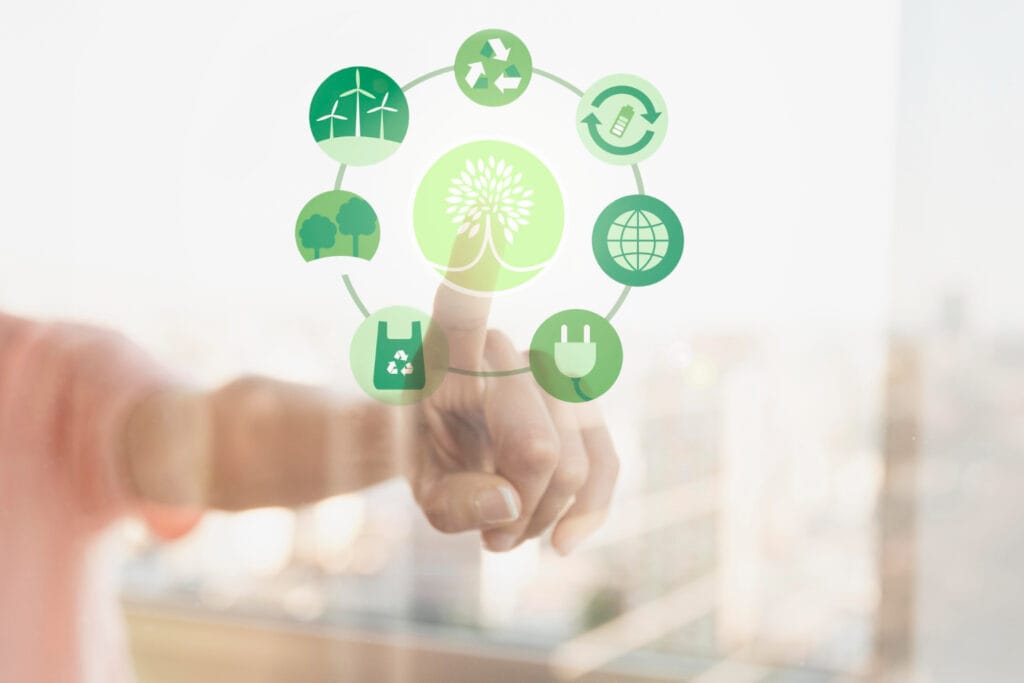
Running a Carbon-Neutral Small Business: Practical Tips
More business owners are taking action to make their companies more ecologically conscious as a result of growing awareness of climate change. The objective of operating a small business that is carbon neutral is no longer just for environmentalists; it is now the norm in many different industries. However, what does the term “carbon-neutral” actually mean? And how can you actually accomplish it, particularly if you’re a small company with little funding?
Whether you’re a local café, an online retailer, or a service provider, these tips will help you move toward sustainability while also improving brand trust and operational efficiency.
What Is a Carbon-Neutral Small Business?
A small business that achieves net-zero carbon output by reducing its greenhouse gas emissions as much as possible and then offsetting the remaining emissions is said to be carbon-neutral. This doesn’t imply that your company doesn’t emit any emissions at all; rather, it means that you actively try to reduce them and offset the remainder by funding approved carbon offset projects.
Carbon neutrality often involves improving energy efficiency, shifting to renewable energy, reducing waste, and investing in reforestation or renewable energy projects elsewhere. It’s about balancing the equation — taking responsibility for your impact while striving to operate more sustainably.
Why Carbon Neutrality Matters for Small Businesses
Going carbon-neutral offers several benefits:
- Brand Trust and Customer Loyalty: Consumers today care about the planet and prefer supporting businesses that do too.
- Cost Savings: Energy-efficient practices can reduce utility bills and operational costs.
- Competitive Edge: Carbon neutrality can set you apart in crowded markets.
- Future-Proofing: As environmental regulations tighten, being ahead of the curve can save you from costly compliance later.
Being a carbon-neutral small business is not just about doing good — it’s a smart business decision that reflects well on your leadership and commitment to long-term growth.

Step 1: Measure Your Carbon Footprint
The first step in your carbon-neutral journey is understanding how much carbon your business emits.
What to Include in Your Assessment
- Energy Usage: Electricity, heating, cooling
- Transportation: Business travel, delivery vehicles
- Supply Chain: Emissions from goods and services you purchase
- Waste Generation: Landfill contributions, paper waste, etc.
- Water Usage: Water treatment and distribution have carbon costs too
The EPA’s Carbon Footprint Calculator and the Greenhouse Gas Protocol are two free online resources that can assist you in getting started. As an alternative, a lot of sustainability consultants provide small businesses with thorough audits.
Step 2: Reduce What You Can
Once you’ve identified your major sources of emissions, the next move is to cut them down. Here’s how to make your carbon-neutral small business leaner and greener:
Upgrade to Energy-Efficient Systems
- Replace incandescent bulbs with LED lighting.
- Invest in energy-efficient HVAC systems.
- Use smart thermostats to reduce unnecessary heating or cooling.
Switch to Renewable Energy
- Consider installing solar panels if possible.
- Sign up for a green power plan through your utility provider.
Digitize Wherever Possible
- Switch to cloud storage to reduce paper use.
- Use e-signatures to cut down on physical documents.
- Conduct meetings virtually to avoid unnecessary travel.
Rethink Transportation
- Encourage biking, walking, or public transport for employees.
- Consolidate deliveries and plan fuel-efficient routes.
- Choose electric or hybrid vehicles for business use.
The more reductions you can achieve, the less you’ll need to offset later — saving both carbon and money.
Step 3: Offset the Rest
Even after cutting emissions, your business will likely still have a footprint. This is where carbon offsets come in.
What Are Carbon Offsets?
Investments in environmental initiatives that lower or eliminate carbon emissions from the atmosphere are known as carbon offsets. These may consist of:
- Reforestation and afforestation efforts
- Renewable energy development (solar, wind, hydro)
- Methane capture projects
- Energy-efficient cookstoves in developing countries
How to Purchase Offsets
- Use certified providers like Gold Standard, Verra, or Climate Action Reserve.
- Choose projects aligned with your brand values.
- Calculate your remaining emissions and purchase offsets accordingly.
By balancing your emissions this way, you officially become a carbon-neutral small business.
Step 4: Engage Employees and Customers
Sustainability should be a shared mission — not a top-down directive. Getting your team and customers on board makes the process smoother and more meaningful.
Educate and Involve Your Team
- Hold workshops or webinars on sustainability.
- Create a green committee to lead initiatives.
- Recognize employees who contribute ideas or improvements.
Communicate with Customers
- Share your carbon-neutral journey on your website and social media.
- Add eco-labels or certifications to your packaging.
- Include sustainability metrics in annual reports or newsletters.
People are more likely to support a carbon-neutral small business when they see transparency and real commitment behind the claim.
Step 5: Partner with Green Vendors and Suppliers
Your company doesn’t function alone. Carbon footprints are also present in the goods and services you use and sell.
How to Make Greener Choices
- Prioritize suppliers who are also carbon-neutral or committed to reducing emissions.
- Source materials locally to cut down on transport emissions.
- Choose packaging that’s recyclable or compostable.
Building a sustainable supply chain is a major step in becoming a truly carbon-neutral small business.
Step 6: Track Progress and Update Goals
Sustainability is not a one-time goal — it’s an ongoing process. Set annual goals and regularly check in on your progress.
Tips for Staying on Track
- Conduct annual carbon audits to reassess your emissions.
- Celebrate milestones — like reducing emissions by 20% in a year.
- Adjust strategies as new technologies and resources become available.
As your business grows, so will your emissions. Staying mindful helps you scale responsibly and continue operating as a carbon-neutral small business.
Common Challenges and How to Overcome Them
Going carbon-neutral isn’t always smooth sailing. Here are a few obstacles and ways to tackle them:
Cost Concerns
Yes, some projects call for a one-time financial outlay. However, many offer long-term savings, such as reducing waste or switching to LED lighting. Seek out any grants or tax breaks that your area may offer for green projects.
Lack of Time or Expertise
Start small. You don’t have to go carbon-neutral overnight. Focus on one area at a time. Consider hiring a consultant or using sustainability platforms designed for small businesses.
Skepticism from Stakeholders
Be open and honest. Share your information, objectives, and justifications. When people understand something, they are more likely to support it. Additionally, customers who care about the environment are becoming more and more prepared to pay more for sustainable companies.
Real-Life Examples of Carbon-Neutral Small Businesses
To inspire your own journey, here are a few examples of small businesses that are doing it right:
- EcoEnclose: A packaging company that offers 100% recyclable and compostable shipping materials and runs entirely on renewable energy.
- Patagonia Provisions: While part of a larger brand, their small food division focuses on regenerative agriculture and carbon-conscious food production.
- Brightly Eco: A sustainable lifestyle brand and platform that achieved carbon neutrality by reducing travel, going digital, and offsetting residual emissions.
Each of these businesses took different routes but ended up with the same result: becoming a carbon-neutral small business with loyal customers and strong brand equity.

The Future of Small Business is Carbon-Neutral
As climate concerns grow and consumer expectations shift, carbon neutrality will become less of an option and more of a requirement. The good news is that starting now gives your business a significant head start.
You don’t have to be perfect. The goal is progress, not perfection. Every step you take — from changing your energy source to switching suppliers — moves you closer to running a truly carbon-neutral small business.
Final Thoughts
Operating a small business that is carbon neutral may initially seem impossible, but with the correct attitude and methodical approach, it is entirely doable. Measurement is the first step, then reduction, offsetting, and continual improvement. Involving your team, selecting environmentally friendly partners, and maintaining accountability will not only lessen your company’s environmental impact but also help you create a brand that consumers will be proud to support.
So take the first step. Your business, your customers, and the planet will thank you.
